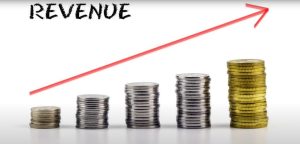Content Commerce: Emotion-Driven Shopping Experience

As an artist, you craft exquisite handmade cups, each infused with dedication and spirituality. However, when you try to sell these cups on an e-commerce platform, they hardly attract any attention. People question why your cups are priced at $199 each when others are selling theirs for $9, inclusive of shipping. Some suggest using tactics like “flash sales, discounts, bundled offers” to sell your cups, but the artistic appeal and superior quality of your cups make it impossible to compete with the $9 counterparts, no matter the promotions. What should you do?
To address this issue, we first need to understand its essence. Your problem is akin to putting an Hermès store on a bustling market street and then trying to explain why a $4000 scarf is a hundred times better than a $40 one. Every product has its suitable shopping environment. The crux of this problem lies in placing the need for emotion-driven “passive consumption” in an environment driven by prices and parameters, a setting known as “active consumption.”
What does “active consumption” and “passive consumption” mean?
When my cup at home breaks, I actively search “cups” on Taobao and pick the most suitable one in terms of functionality, style, and price from a myriad of choices. This is “active consumption.” Active consumers have a clear shopping need, focusing on “buying,” finding what they deem reasonable, and making the purchase. They are driven by prices and parameters.
Conversely, while strolling down the street, I come across an art store and decide to take a look. The artist explains the meaning, origin, and unique craftsmanship behind each cup, and I can’t resist buying one. This is “passive consumption.” Passive consumers don’t have a specific shopping goal; they are “shopping,” and if they like something, they buy it based on emotions.
So, when a consumer spends $199 instead of $9 on a cup, what drives them? It’s clearly emotion. However, most e-commerce platforms are environments driven by prices and parameters where products are categorized and sorted without allowing room for emotional connections.
So, what can you do? You might consider trying Content Commerce.
Once, I read an article on Wu Xiaobo’s channel where he mentioned planting 4000 bayberry trees on his island in Thousand Island Lake. It piqued my interest, expecting to learn about the island’s relationship with the economy or the business logic behind bayberries. But instead, he mentioned that he whimsically turned those bayberries into wine, named “Wu Wine.” Seeing the picture of Wu Wine, it looked beautiful! Then, the article presented the purchase link, mentioning it was an experiment with only 5000 bottles available, unsure if I’d like it.
And guess what? Despite not being a wine enthusiast, I ended up placing an order.
According to Wu, those 5000 bottles of Wu Wine sold out within 33 hours. Later experiments sold 33,000 bottles in 72 hours. Today, the estimated value of “Wu Wine” has exceeded $1 billion.
That’s Content Commerce. It makes users “buy” while “browsing,” rather than “browsing” to “buy,” reducing sensitivity to prices and parameters and making emotional connections more feasible. It’s particularly suitable for selling high-priced, non-essential, culturally-inclined products with emotional value.
Moreover, in the business world, can this logic of “Content Commerce” solve other “what to do” problems?
For instance, if you sell high-end air purifiers and want users to focus on value beyond just the price, you might try creating content. Post content on Facebook or contribute articles to influencers, such as writing an article titled “Insights from a Passionate User Who Invested Nearly $200K in Almost 30 Air Purification Devices.” Genuine and professional content will earn user trust and potentially drive sales.
In summary, Content Commerce makes users “buy” while “browsing,” not just “browsing” to “buy.” People “buy” on e-commerce platforms through “active consumption,” driven by prices and parameters. In contrast, people “browse” on Content Commerce through “passive consumption,” driven by emotions, particularly suitable for selling high-priced, non-essential, culturally-inclined products with emotional value.








